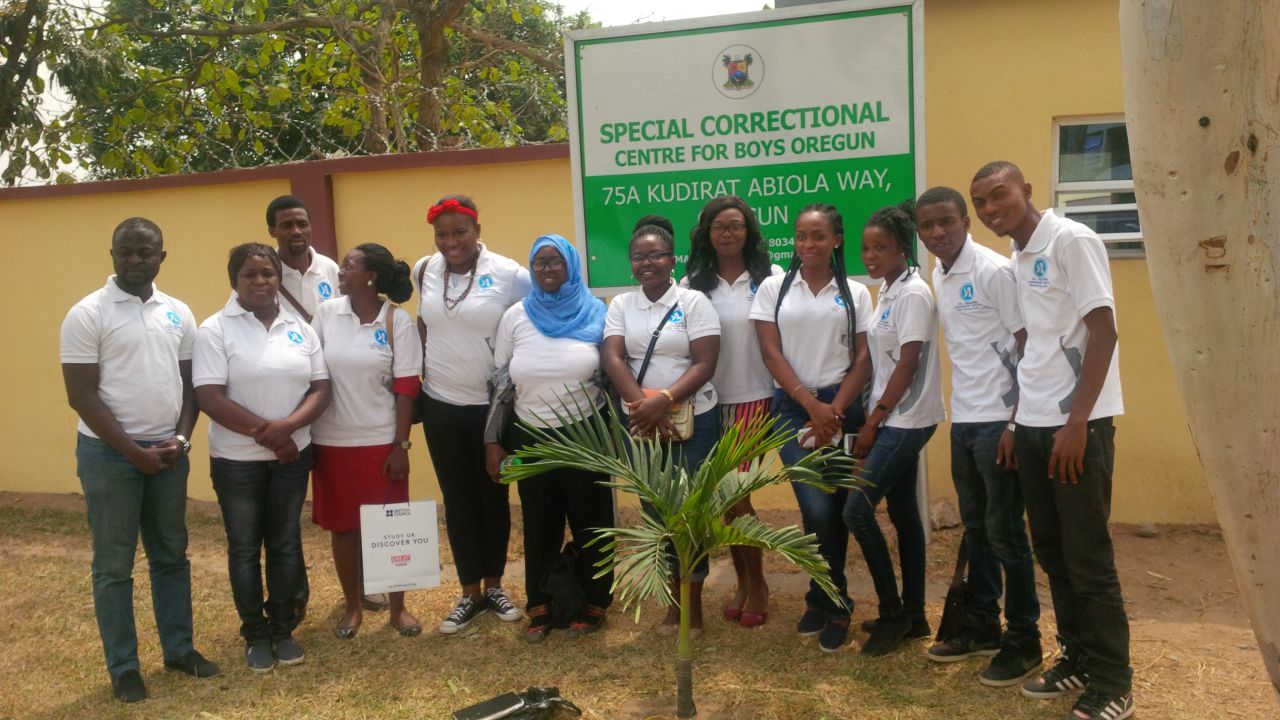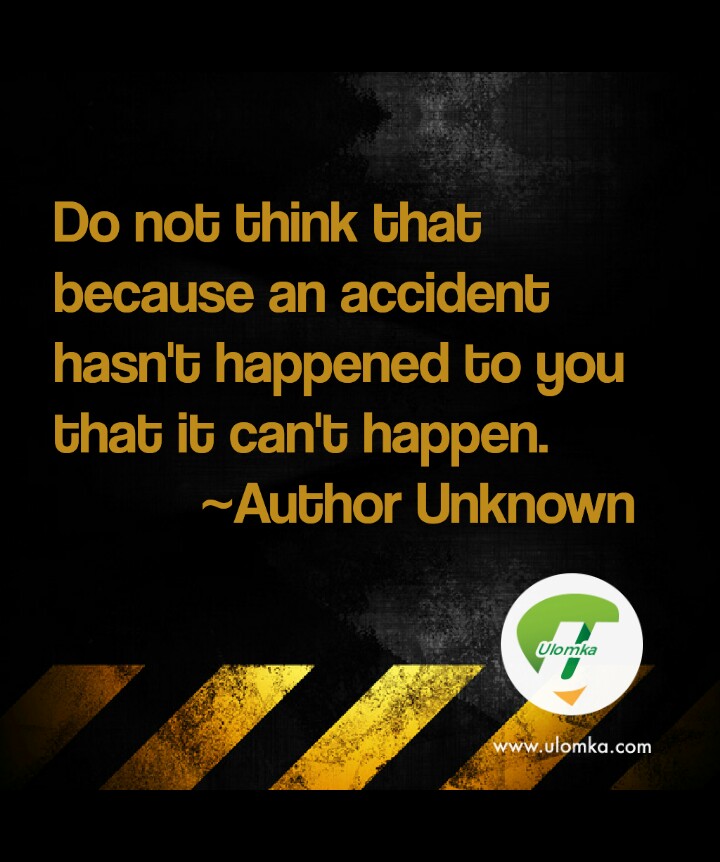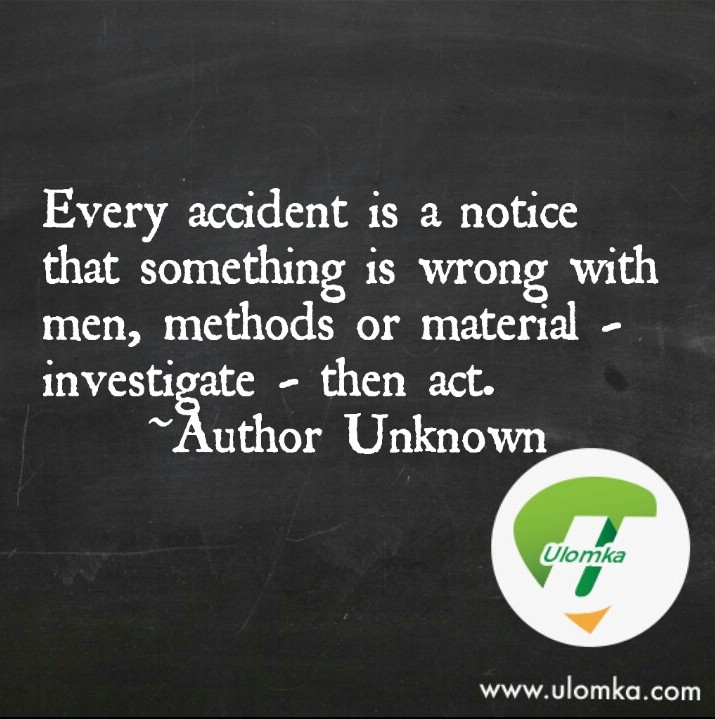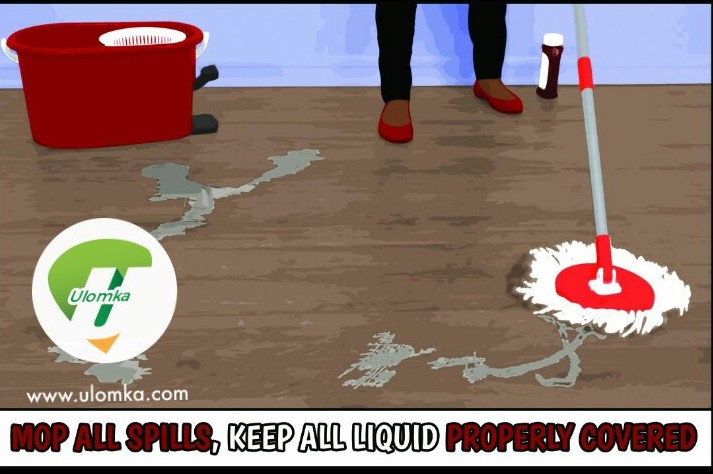Child Safety Week is an annual community education campaign run by Child Accident Prevention Trust (CAPT) in the UK. It is a brilliant initiative that should be done everywhere. For 2021, it will hold between 7th – 13th June. The theme for 2021 is, “Share because you care”. This is so apt. If every adult committed to sharing child safety tips with the child or adults who have children in their care, it would go a long way to reduce avoidable accidents affecting children.
Activities are a great way to make the children a part of the process and to internalise their learning. Here are some activity ideas for you. They can be implemented by both teachers and parents.
1) Drama presentation
2) Debates
3) Book reading sessions
4) Poetry recitation
5) Short speaking presentation
How can this be implemented?
As a class teacher,
1) Pick a topic, teach on it and give them a group task that can be presented to the class
2) Teach a single tip on any area of child safety each day
3) Give an assignment that causes them to research, learn and share their findings with you
As a school owner,
1) Every day throughout child safety week, a safety topic should be taught during assembly
2) Each class can be assigned to prepare a presentation on different topics. Presentations will be made at a communal school event so that everyone learns something new from other classes
3) Invite a safety professional
As a parent, you do not have to wait for the school. Consider the following:

1) Having a conversation with your child
2) Playing a safety game (check out our Safety CheckUp game)
3) Reading a child safety story book with your child (check out our child safety story book series)
4) Giving your children a project on a safety topic and asking them to present to the family during a family bonding time
Things to note
1) You do not have to break the bank. Keep it simple and fun
2) You do not have to do everything. If all you do is one of the points, it’s better than doing nothing
3) There are many points not mentioned here because this is just a guide to get your creative juices flowing
We share because we care. We share because it breaks the cycle of ignorance. We share because an empowered child can act right in an unsafe situation.
Plan to do something for Child Safety Week 2021. Remember, don’t speak “at” the children instead involve them in the process so that they can internalise the knowledge. You must always seek ways to share safety knowledge with children.
Share with others.
]]>
Ugochi Obidiegwu is a Social Development Strategist with a specialty in developing products, programmes and providing policy advisory on pressing development issues affecting young Africans. Her major work pillars are around ensuring child safety, reducing substance abuse in youths and providing strategy for social impact initiatives. She is the author of a child safety storybook series available in English and French, co-creator of an online safety game for children and a developer of social impact apps (The Safety Chic Compass and UProgramme).
Over 7000 children in Nigeria and Ghana have benefitted directly from her Train Them Young Initiative (#2TYI). Her books are self-published on Amazon and have sold in several countries. She also convenes the annual School Safety Summit where stakeholders convene to identify safety challenges to school children and proffer solutions to them. Her engagement with teachers and parents has reached over 3000 individuals. In order to reduce substance abuse, she rolled out a programme where she equips recovered drug users in the Northern part of the country with relevant digital skills to aid smooth reintegration into society.
Ugochi is a 2016 YALI Regional Leadership Centre Fellow, 2018 Tony Elumelu Entrepreneur, 2018 Mandela Washington Fellow and 2018/2019 Regional Advisory Board member of the Fellowship proffering advice to USAID and IREX on matters concerning the Fellowship. In 2020, she was listed alongside Ngozi Okonjo-Iweala, Angelique Kidjo, Peace Hyde and others on the WeForGood list of 100 women creating a better Africa in commemoration of International Women’s Day. Her work in safety education during the pandemic was featured by the UN OHCHR. Her work has footprints in several countries and in both local and foreign media such as She Leads Africa, YALI Network, Bellanaija, Guardian Nigeria, Plus TV, TVC, News Central, WazobiaFMto mention a few. She is also a TEDx Speaker.
In 2019, she won the 2019 AFRISAFE award in the Shining Star category due to her contributions in the safety industry. She is currently a member of the Institution of Occupational Safety and Health (IOSH) and the World Safety Organisation where she made a presentation on grooming the future workforce at its annual Symposium in Las Vegas. The European Network Education and Training in Occupational Safety and Health (ENETOSH) website profiled her work as good practice for member countries. Ugochi Obidiegwu is committed to introducing innovative programmes and products that enhance social development in young Africans.
]]>
We are super excited that the work we do here led by our Managing Partner, Ugochi Obidiegwu was featured on the website of the UN OHCHR. Ugochi was one of the African women featured in a publication by the UN OCHCR tagged “On the frontlines: Defending rights in the time of COVID-19″.
An excerpt reads,
One of the major challenges during the pandemic was the proliferation of false information, causing more fear and panic than the virus itself. That is why, Ugochi Obidiegwu, also known as The Safety Chic due to her work in raising safety consciousness, decided to step up her efforts on safety education.
For the pandemic, she focused her interventions on children and adults. She wrote a child safety story booklet on the coronavirus, “The Adventures of Muna: A kid-to-kid guide on the Coronavirus.” The booklet used a story, African characters, questions, colouring activities, and a maze to pass on the safety message in a fun but enlightening way to children.
A thousand booklets were produced and distributed to children in six states of Nigeria. Obidiegwu hosted three virtual book-reading events for children and also partnered with a Nigerian educational technology company to create an online game to prepare children for safe school resumption in a pandemic.
Read complete article on the UN OHCHR website.
To download the publication and read about other African women on the frontlines, visit the website.
Congratulations to our Managing Partner and the entire team of Ulomka.
]]>So, do you have a fire escape plan at home? Depending on where you work, you most likely have a plan in the workplace but the home is usually neglected. A fire escape plan is important because it helps you know what to do in a fire emergency. This plan must always be communicated to everyone in the home including children and visitors to ensure overall safety.

What should the fire escape plan entail?
1) A floor plan of the house marking two exits from each room
2) Consideration for infants, special needs and the elderly
3) The meeting spot after leaving the house
4) The emergency number to be called
How many times should a family rehearse the escape plan?
You have two minutes to get out of the building.
What should you do when you notice a fire?
1) If you cannot fight the fire, you must GET OUT, STAY OUT and call for HELP
2) If you are trained to fight the fire, have the right equipment and the fire is within your scope, fight the fire
3) If you are trained to fight the fire, have the right equipment but the fire is outside your scope or you are not mentally ready for it, GET OUT and call for HELP
Finally, always ensure you have the right firefighting equipment, ensure it is serviceable (not expired and working) and know how to use it.
1) Do I need first aid training?
Yes, everyone needs first aid training because anything can happen anywhere, any time and on any type of job e.g. barber shop, chef kitchen, place of worship, construction site, classroom, home, bank
2) What is the goal of First Aid?
It’s called the 3 P’s
a) Preserve life, so the person doesn’t die
b) Prevent further injury
c) Promote recovery
3) How can First Aid Training be effective?You must combine theory with practice sessions. Drills and role play sessions are a great way to internalise learning. You must also be willing to share with others
4) How can we change society’s attitude to first aid?
We must begin with advocacy and take first aid training to every sphere of life. Let’s begin to have sessions in schools for children and teachers, workplaces, places of worship, professional associations, social clubs and residential estates.
Have you registered for #SchoolSafetySummit4 yet? Register here
#TheSafetyChic
Intentionally grooming a safety conscious generation
Now that you have identified a particular safety issue affecting children in your school, book club or community, how can you intervene appropriately? Many times, this is where injury prevention efforts fail. It’s one to thing to know you need to implement an intervention and it’s another to implement an intervention that works.
Here are key points to consider:
1) Clarity on what the intervention aims to change e.g. to reduce bruises on the playground
2) Intervention must be evidence based to ensure effectiveness e.g. over the past few months, medical records show the school nurse has treated students every week for bruises sustained on the playground
3) Create a well rounded plan that covers all possible areas e.g. change the playground floor type, teach the children about safe play, increase supervision on playground, have a first aid box close etc.
4) Intervention must be creative and user friendly to the end user. Ease of use makes an intervention more likely to be used. E.g. my child safety story book, The Adventures of Muna uses stories and lots of pictures to pass the safety message
5) You must have a feedback/evaluation system. If you had clear and specific goals from the beginning, evaluation will be easy because you know what you’re measuring for. E.g. when the rates of injury attributed to the playground drops
Hope this was helpful? Share with others
#TheSafetyChic
Intentionally grooming a safety conscious generation
It’s back to school season again. Unfortunately, some children and staff are afraid to resume school because of a “bully”. Anyone can be bullied and so school owners have a responsibility to take leadership.
Do you have an anti-bullying policy? If you do not, you are indirectly supporting bullying and making your school an emotionally unsafe space. An anti-bullying policy is a great way to boost confidence in both students and teachers.
Here are some important aspects that must be covered by your school’s anti-bullying policy:
1) Your school’s vision and approach
This is a description of what connotes bullying, who can be affected, how it impacts victims and what your school aims to achieve with this policy
2) Roles and responsibilities of stakeholders
Here, identify all the key stakeholders and assign roles. Everyone has a role to play from school leadership to students, staff and parents/caregivers
3) Prevention and response to bullying
Quick and effective response is important, so state the details of the strategy that would achieve your vision. This includes steps to be taken to aid prevention and how to respond when a case arises.
4) Stakeholder communication
Communication is key. A policy that is not communicated to relevant stakeholders will not be effective. State how you will do this
5) Impact assessment and periodic review
Evaluation must be done to see how well the policy works in its entirety. State how you plan to assess the policy. Also, a specific duration must be set for a review e.g. every 3 years
I hope this was helpful? Share with school owners
]]>
The Lagos residents of the Young African Leaders Initiative (YALI), Nigeria Cohort 1 visited the Special Correctional Centre for Boys, Oregun. The visit was intended to give the boys training in specialised areas, provide academic and welfare supplies and inspire them.

I was given the opportunity to provide some aspects of the Train Them Young Initiative (#2TYI) for them. The boys were taught the basics of fire safety, personal safety and road safety. The boys were very intelligent and disciplined. The kind of questions they asked showed an understanding of what they were learning. They also got the chance to thrill us with their talent. They are an amazing lot. Contrary to perception, not all of them are there for wrongdoing. Some are there whilst waiting for the Courts to decide custody between parents or parental decision because of their stubborness and others were rescued from the streets.

Due to the laws at the facility, we couldn’t take pictures with the faces of the kids but back view was allowed. The boys have diverse areas of interest. Some want to be musicians, pilots, engineers and there are a few who can code. Amazing right? We can help the society by helping to keep hope alive for these boys. You could contribute in cash, welfare or academic supplies or better still based on your expertise, mentor them on your career path. Practical lessons are very valuable. Let us work together to help these boys achieve their dreams. Remember, they are going to be re-introduced into the wider society. Do we want wiz kids ready to make impact or do we want societal menace?
]]>
What we eat has a direct connection to our mood, performance and our safety throughout the day.
TIPS TO REMEMBER
- People tend to take more shortcuts when they are tired or stressed
- Distractions cause more accidents than any other factor
- Eating right is important
- Breakfast gives you the right energy boost to start up your day
- The type of food eaten determines the energy levels that one can maintain during the day
- Avoid energy drinks and high sugar foods because they lead to blood sugar highs and lows
- Blood sugar highs and lows leads to mood changes all day. One minute you are alert and as soon as your supply runs low, you feel drowsy and weak
- Avoid cookies, pastries, candy bars because they lead to erratic blood sugar levels
- Maintain blood sugar on even level by eating whole grain carbohydrates, cereals, breads or fruits
- If you feel fatigued, stop work.
According to Lindsey Friedman, about 3 million workers a year in the US private sector are injured. The rate of injuries and illnesses are highest among small and medium-sized companies. Now, that is the US, imagine the current statistics in Africa.
As we say sometimes in Nigeria, “It’s not my portion”, “God forbid”, “I’ve never had an accident before”, but precaution is better than cure. Accidents and other such incidents in the workplace are one of the ways businesses lose money and for an entrepreneur working on limited funds, this is not the way to go.

It’s never too late to build a safety culture. It is important to invest in accident prevention because trust me, without adequate control measures in place, accidents will definitely cost you. Don’t worry though, here are some tips to help:
Formal safety policy and procedures
You need a defined Health and Safety policy, work procedures and actions to take in emergency situations. Determine upfront that you want a safe business and work towards it.
Avoid shortcuts in work activities
We understand you have deadlines to meet but hey, we would like to see you arrive at the end in one piece. Remember, you need to be alive and in good health to bring in the money.
Hazard identification
Hazard is anything with the potential to cause harm. You need to study your operations and identify likely hazards. This is a major step because identification makes you come up with ways to limit the effects of hazards on your business.

Communication
Free flow of effective communication between employers and employees keeps a workplace safe. Employers need to communicate safety procedures to their employees verbally and using appropriate signs. Employees on the other hand should report safety concerns because they are directly involved in the work process and experience things first hand.
Provision of appropriate equipment
When buying equipment for your operation, always buy the right one. Research to know what is best for your business. Remember, whatever is worth doing is worth doing well. Improvising has caused many workplace accidents. For example, if employees have to climb to reach material, please provide appropriate ladder so they do not have to use a stool.
Provide Personal Protective Equipment (PPE)
Depending on the hazard faced with each task your employees will have to do, provide relevant PPE. Protective equipment include gloves, coveralls, safety shoes, hard hats, safety goggles, ear plugs etc.
Good housekeeping
This simply means a clean and orderly workplace where certain things are avoided. Unmopped spills, disorganised work spaces, loss of concentration, not putting away used items have led to workplace injuries. Therefore, cleanliness and orderliness in the workplace is very important.

Training
New employees need to be trained in work processes as research has shown that they are more likely to be involved in workplace accidents. Also, when new equipment or work processes are introduced, staff should be trained. Yes, we know you’re still working with those limited funds but the costs of accidents are even more. Be on the look out for cost effective training.
Regular inspection
Work processes and equipment must be inspected from time to time. Inspections reveal pitfalls in the system and give you the opportunity to tackle them before problems arise.
Vehicle maintenance
All vehicles used for business must undergo routine maintenance. Don’t say, “Oh, it’s still alright”, “Everything is still functioning well”. Regular maintenance ensures that you are safe every single time you get into a vehicle.
We would absolutely love you to achieve your success story without any broken limbs. Tell us tips you use to prevent accidents in your workplace.
Article was originally published on She Leads Africa
Image Credit: @ulomka
]]>

